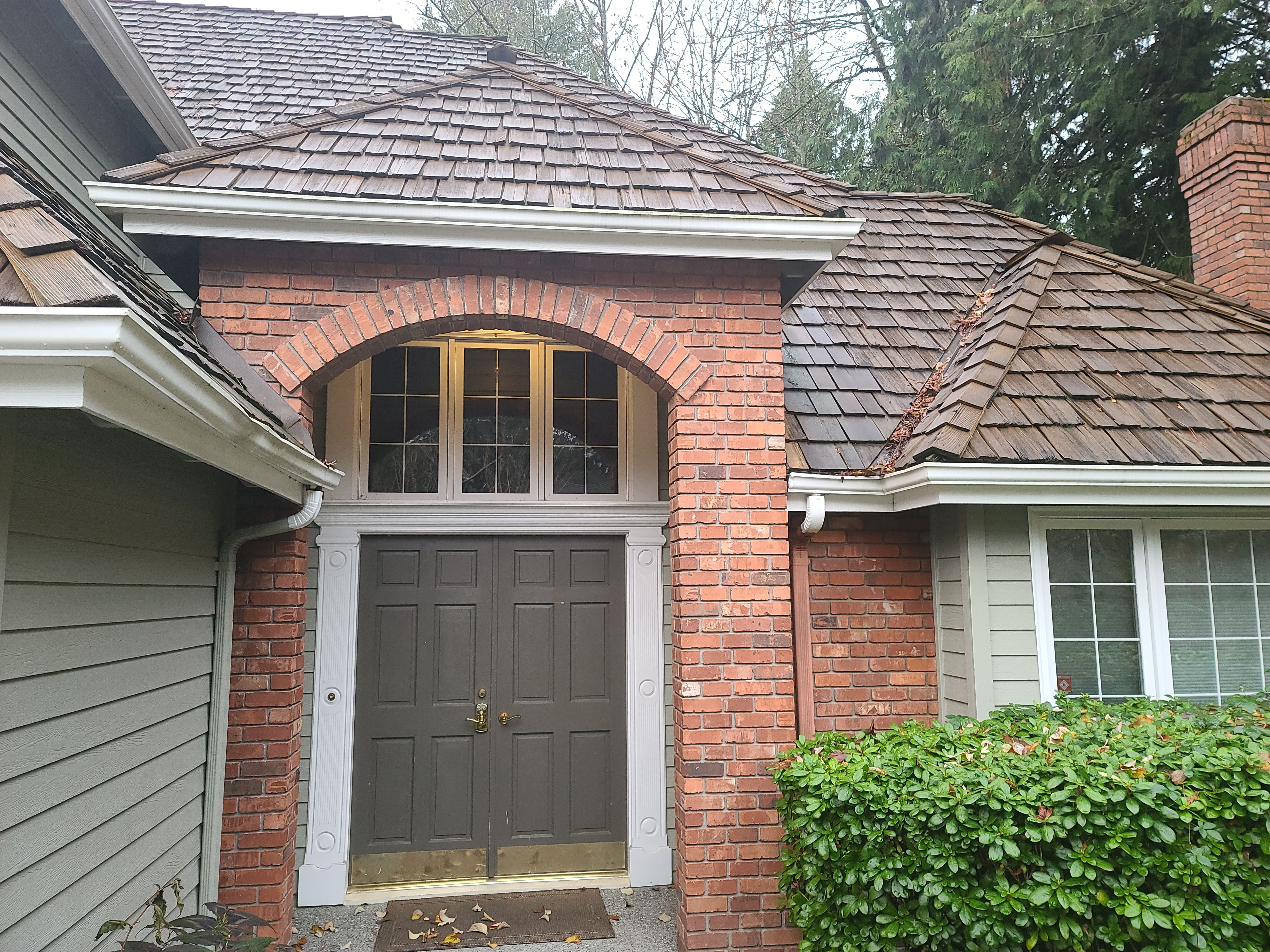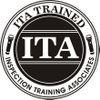Wood Destroying Organisms
This report includes a structural pest inspection embedded within the report. All observations in this report that begin with WDO are a part of a WA State Pest Inspection. Orca Inspection Services LLC employs Dylan Chalk, Licensed Structural Pest Inspector ##65540. Please note that most WDO observations are related to high moisture conditions that could be conducive to mold-like substances. Orca Inspection Services LLC is not a mold specialist and recommends consulting with an industrial hygienist or other mold remediation expert if concerned about mold or indoor air quality.Pest Inspection Standards in Washington State - WAC 16-228-2045 - REQUIRES THAT A DIAGRAM / DRAWING BE PREPARED FOR WOOD DESTROYING ORGANISM (WDO) REPORTS. IF THE PHOTOS AND DESCRIPTIONS IN THIS REPORT ARE INADEQUATE, A DRAWING IS AVAILABLE UPON REQUEST.
Summary
Major Concerns
- ED1-1 Exteriors and Decks:
Louisiana Pacific OSB siding has been used to side much of this house. This siding, commonly referred to as "LP siding" is installation sensitive and is vulnerable to premature failure where poorly installed and / or exposed to the weather. Based on the age of the home it is likely LP's Inner Seal siding. This OSB siding product has been the subject of a class action law suit regarding premature failure. The suit has been settled and no more settlement funds are available. Visual inspection today showed that the siding is failing where exposed to the weather. I recommend additional inspection by a qualified contractor. Repair / update the siding as recommended and be sure to fully evaluate the scope of this project such as the potential for window updates as well as replacement of weather barriers, trim, flashings, caulk and paint. Examples of observations noted during inspection include
- LP knot - verifies this is LP siding
- I would expect damage to areas in soil contact and near the ground
- I would expect the need for replacement where roof splash-up can damage the siding.
- Water damage to base of Siding and door here
- Significant damage to LP - south side - bump-out
- Expect damage to the siding where it is near or in contact with hardscape.
- Check bottom edge such as these for delamination
- ED1-2 Exteriors and Decks:
Localized rot repairs are needed to the exterior trim - see the base of the bump-out at the SW corner. Hire a licensed general contractor to further evaluate and repair the exterior siding system. Repair and replace all damaged and decaying exterior wood as needed. Please note that this condition can indicate additional concealed damage that is not visible to inspection. Also note that proper repair here may require repair / adjustment of the irrigation system as well as repair of incorrect grade and site work here.
- RCG2-1 Roof, Chimney and Gutters:
This wood shake roof is in the last phase of its useful service life. It is common to do roof tune ups with older shake roofs to prolong their useful service life. Tune ups are typically done until roughly 10% of the shakes are in failure. Once this point is reached, it is usually more cost effective to replace the roof. I recommend additional inspection of this roof by a licensed roofing contractor to further evaluate and repair or replace as recommended to ensure reliable performance. If this roof is kept in service, budget for a complete replacement in the near term. Examples of observations noted during inspection include:
- Shakes are old, splitting and rotting at end grain.
- Hip shakes are deteriorating
- Note how the paper interlayment is visible in multiple places.
- Organic debris build-up in valleys can inhibit proper drainage off the roof.
- Signs of prior leaks were noted inside between the living room and the dining room - these tested dry at the time of inspection
Repairs
- G-1 Grounds:
Eliminate wood /soil contact to reduce the chances for rot and pest damage and repair any hidden rot as needed - see north side. Generally, a 6-inch clearance between soils and wood is recommended. This is often not realistic on older homes, but repairs should be made to get as much clearance as is possible and all contact with the soils should be eliminated.
- G-2 Grounds:
The grade of the yard is slopping toward the building - see southwest corner. Standards recommend a quarter inch / foot slope away from the building or better to prevent water draining toward the house. Over time, negative grading, as this is often called, can lead to moisture and even structural problems with the house. Have this repaired as feasible by a qualified contractor. Often, a swale is used to create a low point away from the house into which water can be diverted away from and around the building.
- G-5 Grounds:
Localized areas of rot and loose and damaged fencing was noted. This is characteristic of older fencing. Implement repairs to the fencing as needed until updating. The urgency of this project is subjective and depends how much the new occupant wants to have a fence and what they want it for.
- ED1-3 Exteriors and Decks:
Rot was noted in the barge rafter of the small storage shed on the south side. Repair as needed.
- ED1-6 Exteriors and Decks:
The wood decking and railing system on this deck is getting old and localized wood decay was noted in the decking and railing system. Roughly 5-10% of the wood is rotting and requires replacement in the near term. Temporary repairs can be made by replacing the worst boards, re-setting loose fasteners and cleaning and re-staining the wood but this deck needs to be re-decked in the near term. Hire a qualified general contractor to further evaluate and repair / replace damaged decking.
- ED1-7 Exteriors and Decks:
The deck ledger board has been installed over the siding. This is not a recommended installation as this important structural board has less purchase into framing making the deck more vulnerable to collapse. This is also a more difficult installation to flash and can allow water to get trapped between the deck and the siding causing rot and a conducive pest condition. This can be difficult to correct at this point. Consult with a qualified general contractor about options for repair.
- G2-5 Garage:
The garage slab has a staining pattern on it that could indicate seasonal moisture / dampness. This is usually not a major concern in a garage as this is outdoor space but could limit the uses of this space. High moisture content in a garage slab could make it difficult to store cardboard on the floor for example, or finish this space, or could even lead to condensation problems on the overhead door. You can use concrete sealers to better seal the concrete and slow water wicking through to the surface. It is common on garage slabs to prepare them with less vigorous water proofing techniques as they are outside the thermal envelope.
- RCG2-2 Roof, Chimney and Gutters:
Redirect flashings are needed to divert water around the masonry chimney at the north side - see how water has been running down the side of the chimney.
- RCG2-5 Roof, Chimney and Gutters:
Organic growth was noted on the masonry chimney. This can be bad for the chimney and trap water in the masonry and hasten deterioration of brick and mortar. Consult with a qualified mason about options for cleaning and sealing the chimney and repairing failing mortar or sealing any cracks as needed.
- HCFV-4 Heating, Cooling, Fireplaces and Ventilation:
The kitchen fan was noted to be ducting into the crawl space - see duct leaks. This could contribute to condensation and mold problems. Repair all fans to be ducting to the exterior of the house and insulate to R-8 or better.
- I-3 Interior:
Water stains were noted on the ceiling in the garage and also on some of the trim work in the living room. These stains were tested with a moisture meter during inspection and tested dry at the time of inspection. Inquire with the seller for any history of prior leakage to get a better sense if repairs may be needed to prevent another leak. Many water leaks are intermittent or related to specific weather conditions or occupant behavior; it is impossible for us to distinguish these conditions during a one-time inspection or to know if repairs could be needed to prevent future leaks. Repair damaged finishes and paint as needed for a proper cosmetic appearance and implement additional repairs as needed to prevent future leaks.
- K-3 Kitchen:
The dishwasher has likely not been run for a while. This can dry out the dishwasher seals and lead to leaks. Leaks were found during inspection indicating repairs or updates may be needed. Have this appliance serviced and repaired as needed.
- FB1-3 Family Bathroom:
High moisture meter readings were taken around the family bathroom toilet, indicating there is likely leakage and possibly concealed water damage. I also noted water stains around the toilet. It is difficult to determine the extent of the needed repair at this time. Repairs can be simple or more complex depending on the moisture source and the condition of materials below the toilet. Further investigation is required to determine an accurate scope of repair. Hire a licensed plumbing contractor to further evaluate and repair the toilet and the finish floor and sub-floor as needed.
- MB1-3 Main Bathroom:
Water damaged finishes were noted around the shower in the master bath. This is often caused by occupant behavior. Keep the door closed and well-sealed during showering. Make efforts to keep this area dry and make cosmetic repairs as needed.
- CS3-2 Crawl Space:
The plastic vapor barrier in the crawl space is incomplete under the addition. Use 6 mil black plastic to cover all exposed earth. This helps to reduce humidity and eliminate conducive pest conditions in the crawl space. Adjust the current vapor barrier or add more plastic as needed.
- CS3-3 Crawl Space:
Crawl space vents are currently blocked in places - see southeast side. Implement repairs as needed to ensure vents are unobstructed. Use 1/4 inch wire mesh screen to seal as needed. Avoid multiple layers of screen and louvered vents as these restrict air flow. If needed, use cardboard baffles to keep sub-floor insulation away from the vents.
- RPWDO-2 Rodents, Pests and Wood Destroying Organisms:
Wood and cellulose debris was noted in the crawl space. This can encourage wood destroying organisms. Removal of all cellulose debris from the crawl space is recommended to eliminate conditions conducive to wood destroying organisms. This should include all wood as well as the old cardboard form material around the footings.
Recommended Maintenance Items
- G-3 Grounds:
All trees, branches and vegetation should be pruned at least six feet away from the building to eliminate a condition conducive to wood destroying organisms and a path for rodent entry - see all around the house.
- RCG2-7 Roof, Chimney and Gutters:
The gutters are clogged with organic debris and require cleaning to ensure proper control of roof runoff. Clean the gutters and ensure they are unobstructed, leak free and properly sloped to drain. This is routine house maintenance; I would expect the need to clean gutters and downspouts regularly.
Improve Or Upgrades
- LAP-1 Laundry and Additional Plumbing:
A moisture alarm with water shut-off features is recommended under the washing machine to protect against accidental leaks in the supply hoses. Pans can be effective when there is a drain, but even these will not protect against a burst supply connector. A moisture alarm with automatic shut-off will. Watts is a brand I have seen installed: Link.
Monitors
- CS3-5 Crawl Space:
The crawl space was dry at the time of inspection but I did note muddy soils on the plastic vapor barrier - see the low point by the entry. This could indicate seasonal moisture issues as they look like soils that have been wet in the past. This is difficult to gauge in new construction. I recommend inspecting this space for water during the rainy season to see how this new building performs. Mild dampness in the wet weather is pretty normal but there should be no significant standing water or pooling above the vapor barrier. The plastic vapor barrier should never be floating on water.
Inspection Notes And Limitations
- HCFV-5 Heating, Cooling, Fireplaces and Ventilation:
There seems to be a whole house fan installed on a relative humidity gauge. This is a nice feature. The goal is keeping indoor relative humidity below 55% or so, especially during winter months. When humidity exceeds the desired setting, the fan should come on to facilitate air changes and dry the building. A system like this should work well in this climate zone. You may want to double check the gauge periodically with a newer humidity gauge just to make sure it is accurate.
.png)





